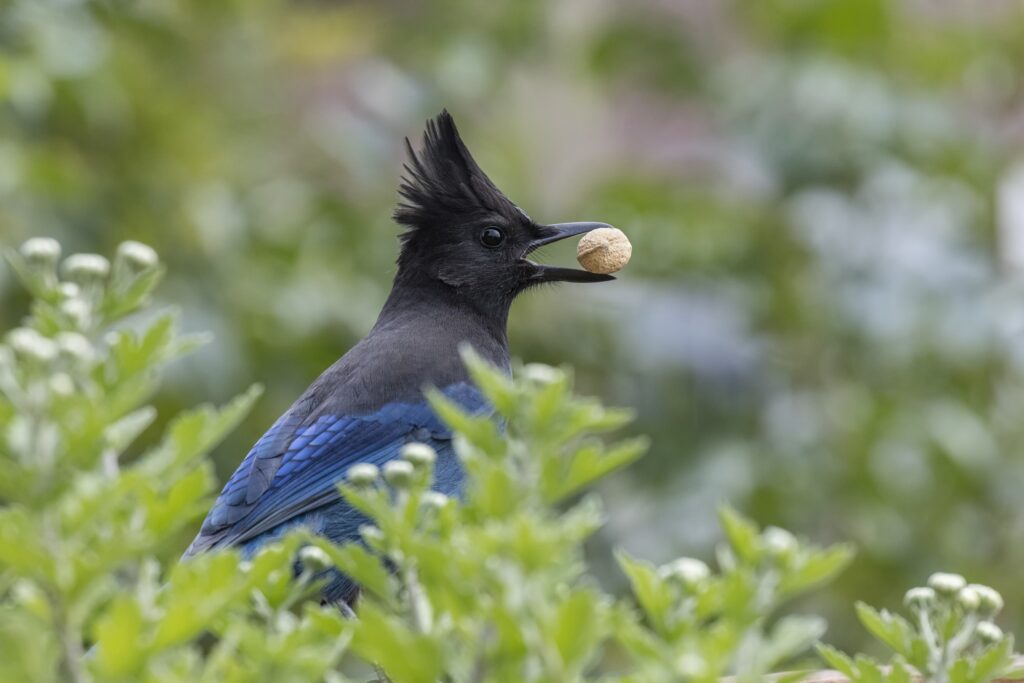Out of the 563 species in Arizona, we’re pretty sure you have come across a few charming birds. With so many species, Arizona is a world-class birding destination. If that hasn’t brought the birder in you to life, we’re sure that our list of the 31 most arresting birds in Arizona will change your mind.
Our list has some funny-looking birds, some pretty intimidating ones, and others so radiant that they’ll take your breath away.
Before we jump into our list, it’s worth mentioning that Arizona flaunts one of the top ten birding destinations in the United States: the Chiricahua Mountains. In addition, the state boasts many state parks, national conservation areas, canyons, mountainous areas, and birding trails, so it’s definitely a birder’s paradise.
Without any further ado, let’s check out the most interesting birds in Arizona!.
Red Birds
Magnificent Frigatebird
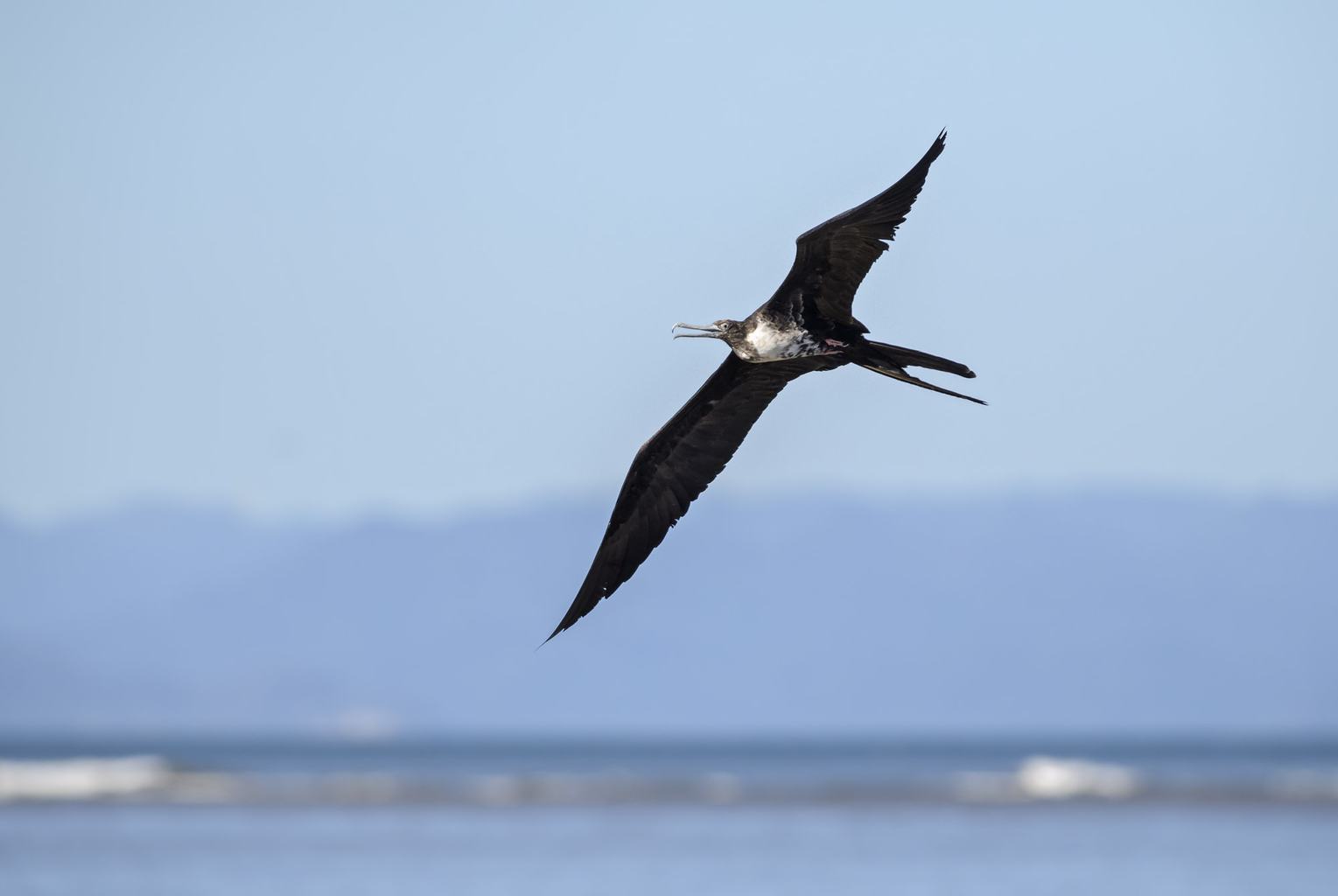
- Scientific name: Fregata magnificens
- Length: 35.0-44.9 inches
- Weight: 35.3-67.0 ounces
- Wingspan: 85.4-88.2 inches
The Magnificent Frigatebird is a memorable bird. It’s almost entirely black with a long bill. The chest, on the other hand, is massive and pinkish-red in color. It even has strawberry-seed-like dots on the sides of its chest.
In adult males, the more puffed out the pouch is, the better chances they have in finding a mate. The Magnificent Frigatebird usually hangs around warm tropical oceans and coastlines. You’ll find it being a seabird bully, stealing other birds’ fish.
Pine Grosbeak
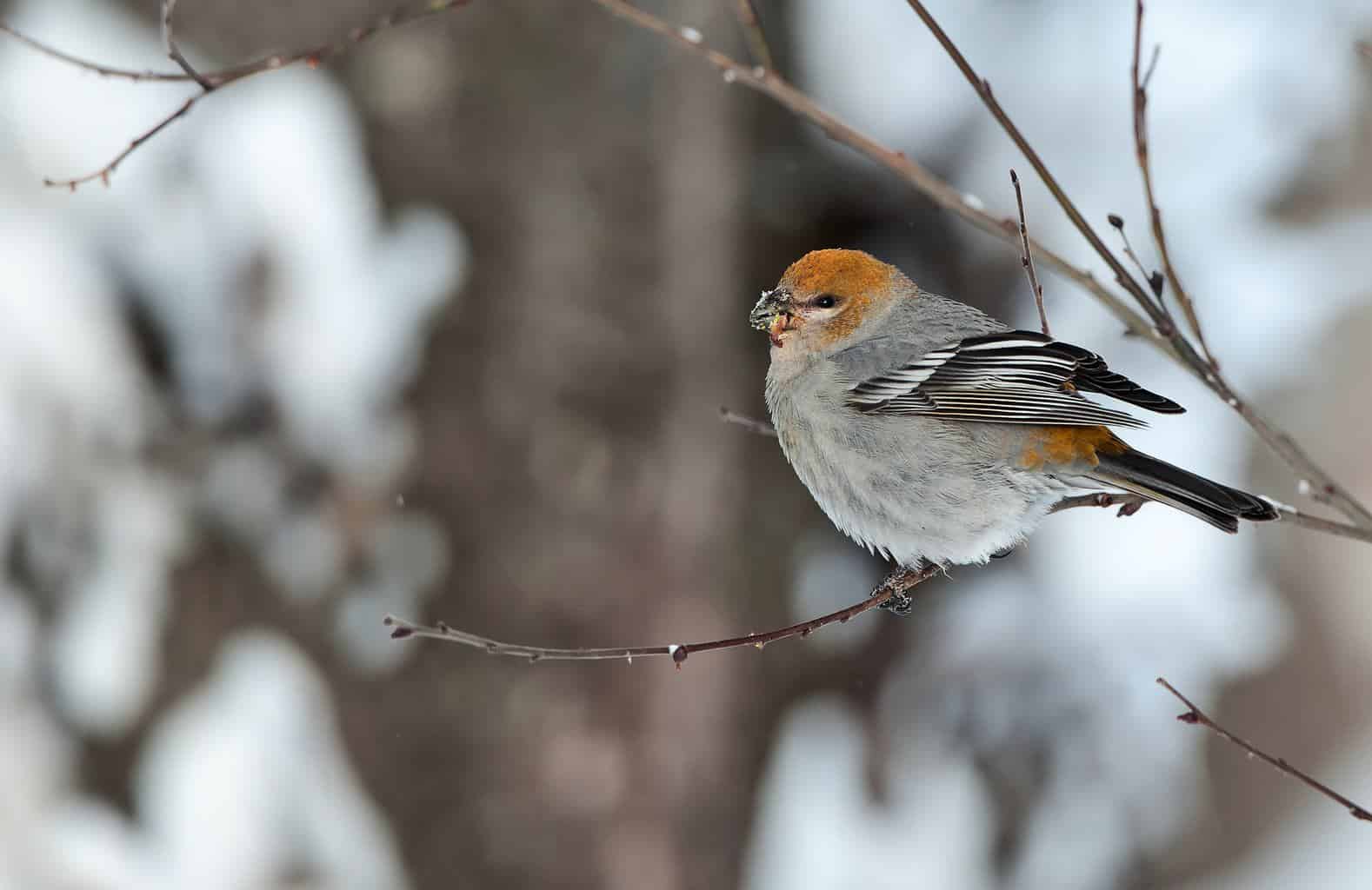
- Scientific name: Pinicola enucleator
- Length: 7-10 inches
- Weight: 1.9-2.6 ounces
- Wingspan: 11.8-14.2 inches
The Pine Grosbeaks are large and wine red. They have smoky eyes and a black stubby bill. Their wing feathers are black outlined with white, and the undersides of the wings are gray.
They don’t scare easily and gather in flocks, so they’re every birder’s dream. They have a huge range including America, Mexico, Canada, Asia, and Europe. They live in coniferous forests and on the edges of open fields.
Northern Jacana

- Scientific name: Jacana spinosa
- Length: 9.5 inches
- Weight: 3-5 ounces
- Wingspan: 20 inches
The Northern Jacana has a tall black neck and head. The forehead has a bright yellow clover plastered on it that matches with its yellow bill. The wings are puffy and mahogany-colored. It also has remarkably long gray legs.
It’s a year-round resident in Mexico and Central America. It rarely visits Arizona. It’s sighted near many types of wetlands; ponds with native vegetation, marshes, and lake margins.
Red-Winged Blackbird

- Scientific name: Agelaius phoeniceus
- Length: 6.7-9.1 inches
- Weight: 1.1-2.7 ounces
- Wingspan: 12.2-15.8 inches
The Red-winged Blackbird is pitch black in color. However, it has very significant red smears on its upper wings which make field identification a breeze. The smears almost look like the bird is wearing puffed sleeves.
Red-winged Blackbirds are one of the most abundant species in North America. You have a high chance of catching sight of them in desert habitats like the Sonoran desert, and also near wet fields.
They sometimes drift into a backyard and enjoy pecking at the ample insects in the grass. Don’t get too close to them, though, as they’re very territorial.
Northern Cardinal
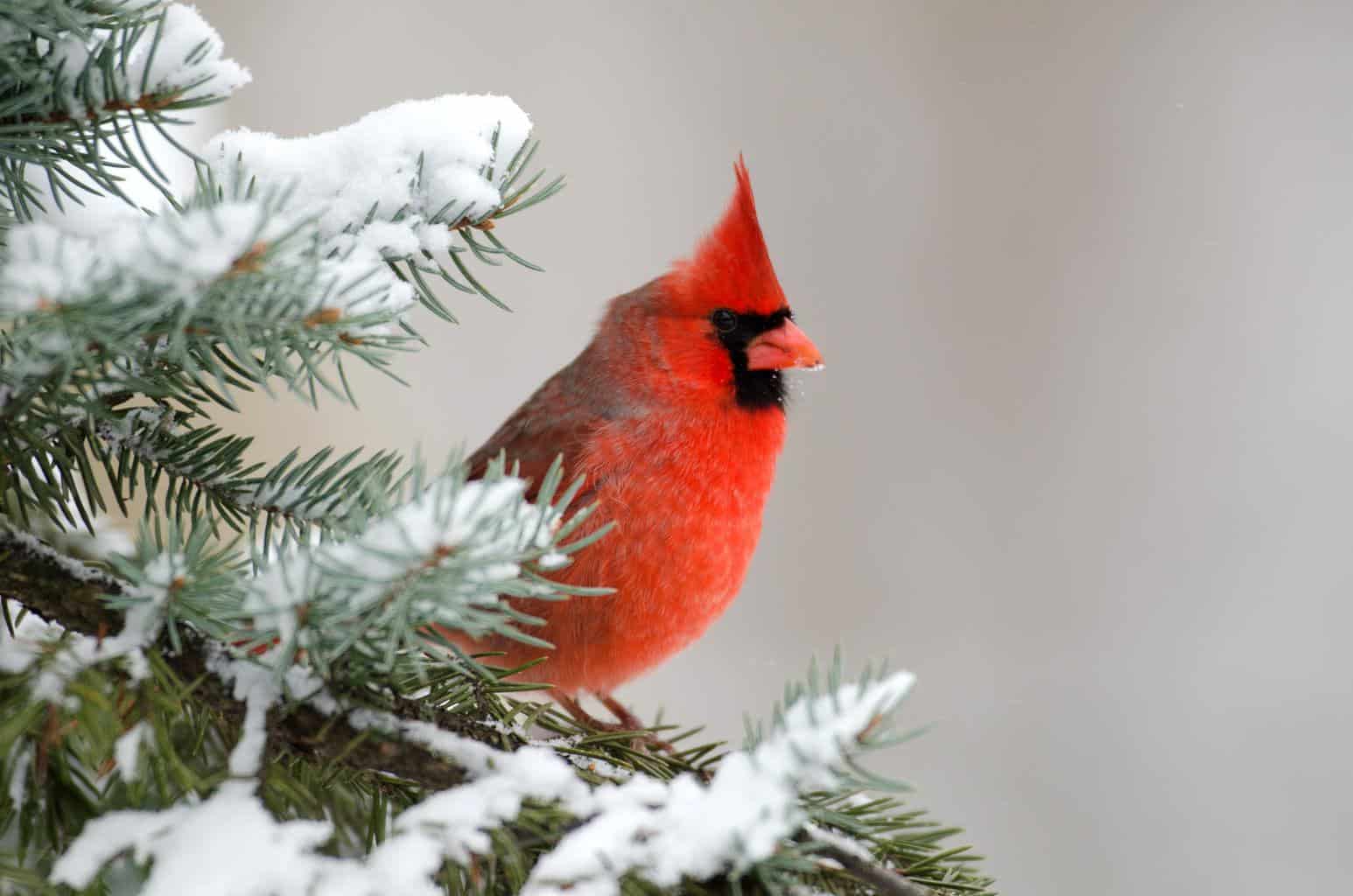
- Scientific name: Cardinalis cardinalis
- Length: 8.3-9.1 inches
- Weight: 1.5-1.7 ounces
- Wingspan: 9.8-12.2 inches
The Northern Cardinal looks like a small bolt of fire. It’s entirely red with gray legs and hints of ash at the wings. It has flying feathers on the top of its crimson crown that adds to the flame resemblance. Its face is black, in contrast with the rest of the body.
Although the Northern Cardinals’ range is mostly in the east and mid-west, you can still find them visiting your feeders in Arizona. These birds are quite romantic; you’ll find the breeding male feeding the female grains beak to beak.
Blue Birds
Broad-Billed Hummingbird

- Scientific name: Cynanthus latirostris
- Length: 31/4 – 4 inches
- Weight: 0.1-0.125 ounces
- Wingspan: 5 inches
The Broad-billed Hummingbird’s plumage is quite incredible in the sense that it sports the whole sea palette; shades of blue, green, and purple blending together brilliantly. It also has a long bill, which inspired its name.
Broad-billed Hummingbirds’ legs are so tiny that they can’t be used to walk or even hop. It’s mostly found in Mexico, but it also breeds in southeast Arizona in desert canyons. Avid birders might try putting out a hummingbird feeder and see what happens.
Blue-Footed Booby
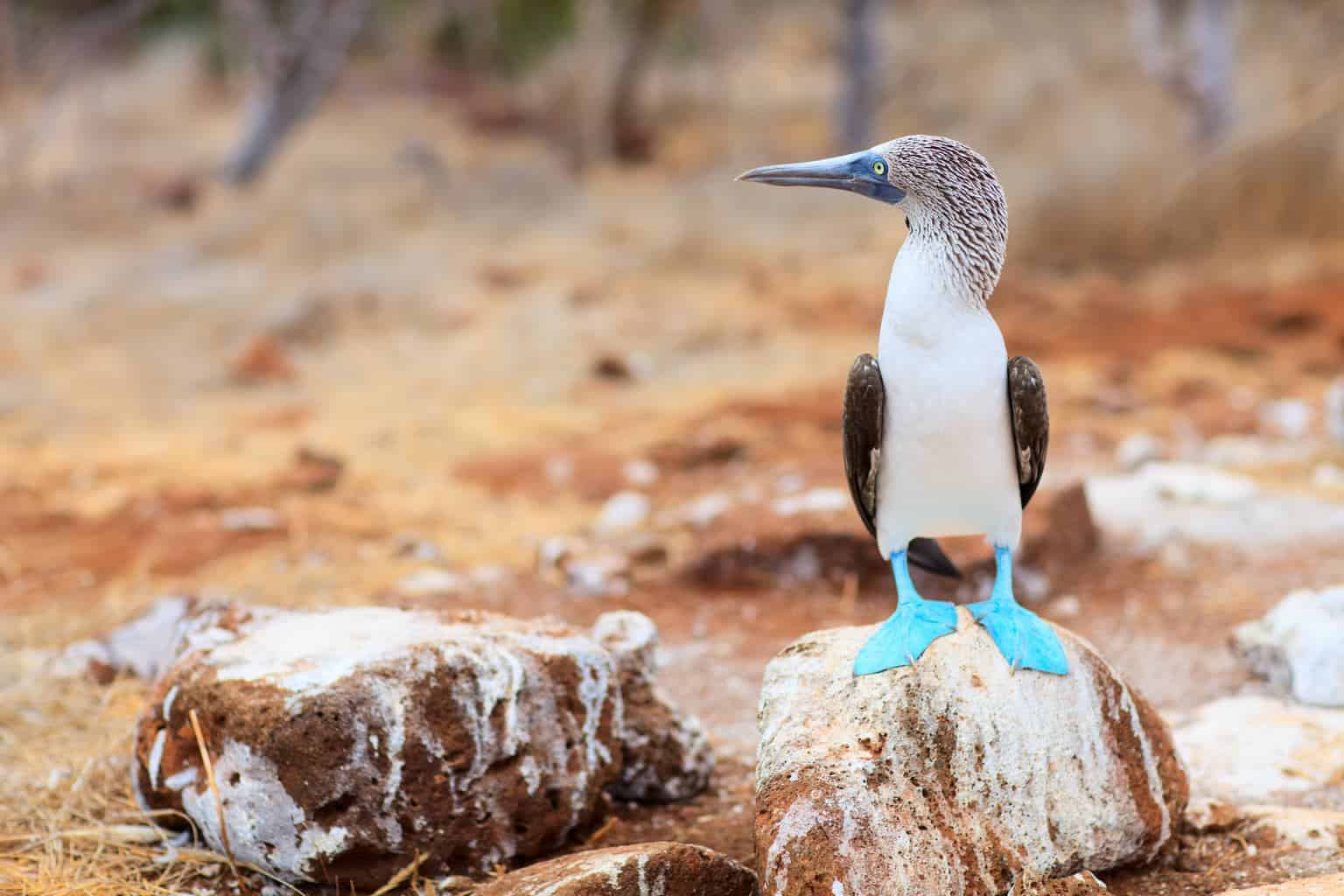
- Scientific name: Sula nebouxii
- Length: 31.9 inches
- Weight: 52.9-77.6 ounces
- Wingspan: 62.2 inches
The Blue-footed Booby has a white chest, brown wings, and a brown-streaked head. It also has yellow eyes and a broad blue beak. Its most notable feature is its baby blue legs. This pair of legs come in handy in attracting female counterparts.
Their range extends through the tropical and subtropical islands of the Pacific Ocean. They’re unfortunately uncommon in Arizona.
Black Rail

- Scientific name: Laterallus jamaicensis
- Length: 4-6 inches
- Weight: 1.2 ounces
- Wingspan: 8.7-11.0 inches
Most of the Black Rail’s body is dark blue, except for the wings, which are black, speckled with white. This beautiful plumage has the appearance of a cloudless sky full of stars.
They usually nest near shallow waters, at coastal prairies and marshes, where they hide stealthily.
Sadly, their habitat is decreasing, and so are their numbers. They’re now considered a species of special concern in Arizona.
Steller’s Jay

- Scientific name: Cyanocitta stelleri
- Length: 11.8-13.4 inches
- Weight: 3.5-4.9 ounces
- Wingspan: 17.3 inches
The Steller’s Jay has a smooth black upper body, including the head. Then, the black gives way to bright blue at the wings. The wings also have a sequence pattern made of lighter blue. It has a blue streak between its eyes and black feathers standing up straight on its head, giving it a comical look.
The Steller’s Jay is found in abundance in the northern half of Arizona, but they fly at high elevations in forests. So, they can be hard to sight.
Mountain Bluebird
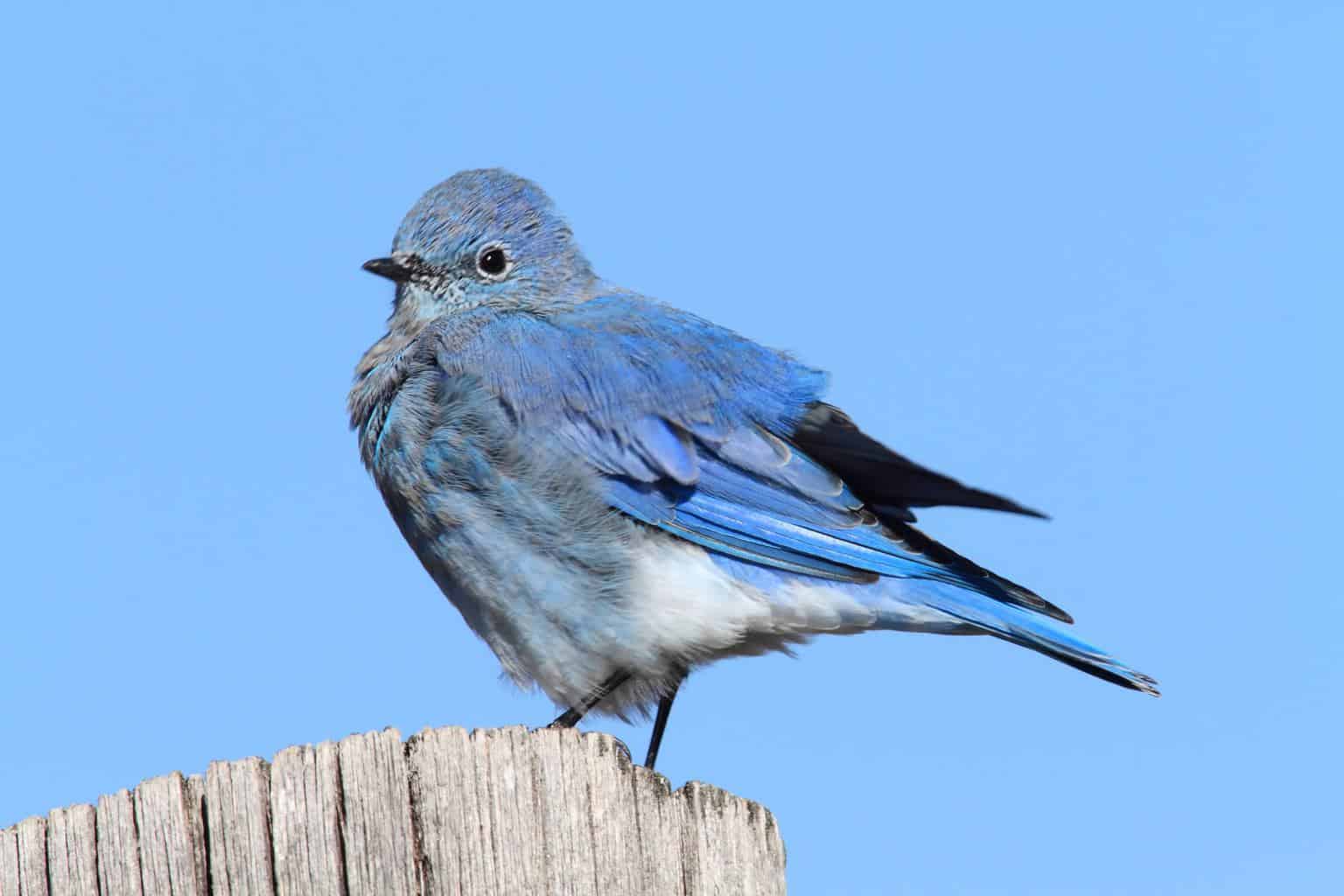
- Scientific name: Sialia currucoides
- Length: 6.3-7.9 inches
- Weight: 1.1 ounces
- Wingspan: 11.0-14.2 in
The Mountain Bluebird’s head and back are royal blue, with dark wingtips. The front, however, is icy blue and fades into a snowy color at the bottom.
Keep an eye out for it in open areas. Depending on the season, its elevation varies, but its love for the mountains never changes, so a field trip might be required. It can sometimes stray down to your backyard if it has the right setting.
Green Birds
Green Kingfisher

- Scientific name: Alcedinidae
- Length: 7.8 inches
- Weight: 1-2 ounces
- Wingspan: 12 inches
The Green Kingfisher has a sharply curved green head and a white collar. It has a beak that’s quite long for its face. Its wings are grassy green with white freckles at their ends. Its rounded chest is rusty, and its bottom is white with a few green spots.
It isn’t very common in Arizona. If spotted, it’ll be in southeastern or south-central Arizona near a stream or a clean fresh water source.
Thick-Billed Parrot
- Scientific name: Rhynchopsitta pachyrhyncha
- Length: 15 to 17 inches
- Weight: 11-13 ounces
- Wingspan: 32 inches
The Thick-billed Parrot’s plumage is a single shade of green, tainted only by a small red patch on the nose and shoulder.
These parrots, sadly, don’t breed in Arizona, but we sometimes get a variant from Mexico. They nest and camouflage in pine trees away from predators’ eyes.
Rivoli’s Hummingbird

- Scientific name: Eugenes fulgens
- Length: 4.3-5.5 inches
- Weight: 0.3-0.3 ounces
- Wingspan: 3.7.1 inches
The Rivoli’s Hummingbird has scale-like feathers. They are aquamarine-colored at the throat and deep purple at the forehead. The wings are a blend of olive and bright greens. It also has the typical long hummingbird beak.
It’s one of the two largest species of hummingbirds in North America. It inhabits canyons and coniferous forests.
Rosy-Faced Lovebird

- Scientific name: Agapornis roseicollis
- Length: 6 inches
- Weight: 1.5-2.5 ounces
- Wingspan: 4 inches
The Rosy-faced Lovebird is light green with a cheeky rose face. It also has a bit of bright blue peeking from underneath its folded wings.
It’s native to Africa but some seem to have escaped and found an affinity for Arizona. In general, Rosy-faced Lovebirds live in semi-desert arid habitats and mountainous areas in elevated places.
Orange Birds
Vermilion Flycatcher

- Scientific name: Pyrocephalus obscurus
- Length: 4.8-5.4 inches
- Weight: 0.4-0.5 ounces
- Wingspan: 9.5-10 inches
The Vermilion Flycatcher is blazing orange. However, it has a gray domino mask and gray darker wings, which dull the fiery color of the bird a little.
It inhabits cultivated lands and desert scrubs, particularly in the Sonoran Desert of Arizona. Lately, it has even started to venture into golf courses and parks.
Crested Caracara

- Scientific name: Caracara cheriway
- Length: 20.8-22.8inches
- Weight: 37.0-45.9 ounces
- Wingspan: 47.2 inches
The Crested Caracara looks like it’s part of the cast of Peaky Blinders. The top of its head is flat and black like it’s wearing an Irish flat hat, and it has an orange Face. Its neck is white and as you get closer to the wings it begins to spot with black. Then, you finally reach its black wings. Aside from its striking orange face and legs, the Crested Caracara is pretty fancy.
Although it perches on the tallest trees, you’ll find it flying quite low. It lives in open areas, be it wet prairies, wooded areas, or even deserts. It ranges throughout Mexico, Central, and South America, and in southern Arizona.
Ferruginous Pygmy-Owl

- Scientific name: Glaucidium brasilianum
- Length: 6.7-7.8 inches
- Weight: 1.6-3.7 ounces
- Wingspan:14.5 – 16 inches
The Ferruginous Pygmy-Owl is a small, angry-looking bird. It has rusty-spotted plumage that ends with white streaks near the legs. It also has piercing yellow eyes and a sharp unibrow.
Arizona was the Ferruginous Pygmy-Owl’s primary home, but with the rise of urbanization, its habitant is getting smaller every day. This has been the cause for a lot of concern.
Varied Thrush

- Scientific name: Ixoreus naevius
- Length: 7.5-10.2 inches
- Weight: 2.3-3.5 ounces
- Wingspan: 13.4-15.0 inches
The Varied Thrush has an orange breast and neck, with a black neck collar. The face, too, is orange, but it has black marks covering the eyes. Another black smear extends from the bill over the head and blends with the black back. The wings are mostly black except for a few orange stripes.
It looks a lot like a robin, so make sure you check for the black collar and orange legs to tell them apart.
They’re found in thick forests, particularly near streams. They occasionally wander to Arizona, but it’s not a part of their range.
Eared Quetzal
- Scientific name: Euptilotis neoxenus
- Length: 13–14 inches
- Weight: 7-8 ounces
- Wingspan: 24 inches
The Eared Quetzal has a small black head. The wings are a combination of shades of green with hints of blue and purple, giving a galaxy effect. As it flies overhead, you’ll notice the bright orange plumage covering the bird’s breast.
It’s quite elusive and rare, so a surprise visit to Arizona makes a birder’s day. It’s mostly found in remote areas, canyons, and pine-oak forests.
Barn Owl

- Scientific name: Tyto alba
- Length: 13-16 inches
- Weight: 14.1-24.7 ounces
- Wingspan: 39-49 inches
Barn Owls are golden colored with heart-shaped faces. Their breasts are white, except for a few scattered gray spots, while their golden backs have a number of gray patches all over.
They’re found year-round in Arizona as part of their wide range. They like to sneak into barns and can be very amiable to other birds. They also perch in churches, abandoned houses, and hollow cavities in trees.
Yellow Birds
Great Kiskadee

- Scientific name: Pitangus sulphuratus
- Length: 8.2-10.2inches
- Weight: 1.8-2.3 ounces
- Wingspan: 14.5-15.3 inches
The Great Kiskadee’s head is streaked black and white, giving it a criminal-like face. Also, it has a warm yellow chest and brown wings that don’t seem to match the face.
It’s extremely rare to find a Great Kiskadee in Arizona, as they have a small range in the US. They will happily visit feeders. And they can be found flying at low elevations near streams and lakes trying to catch their favorite food, fish.
Tropical Kingbird
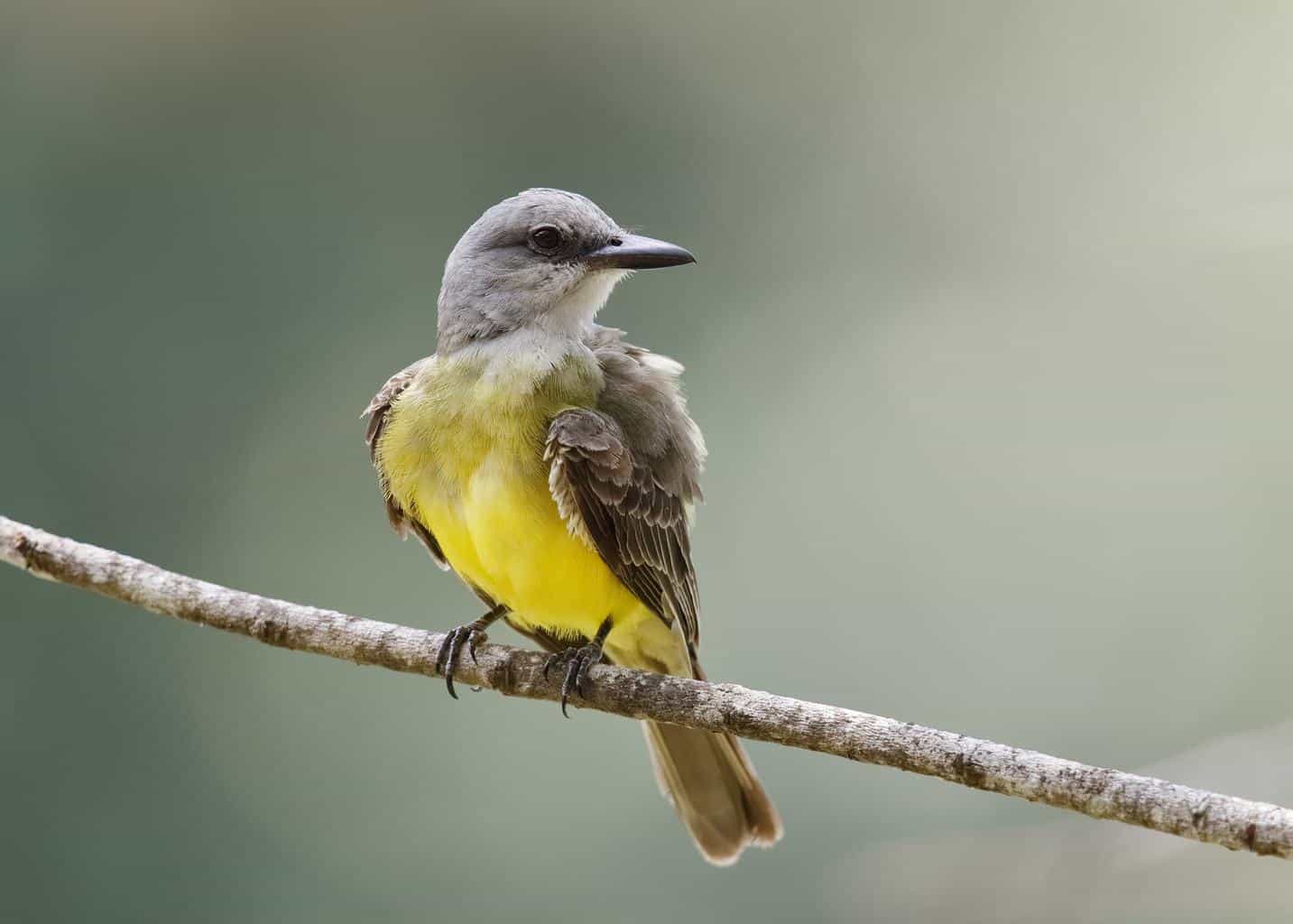
- Scientific name: Tyrannus melancholicus
- Length: 7-9 inches
- Weight: 1.1-1.5 ounces
- Wingspan: 15-16 inches
A Tropical Kingbird has a smoky-gray head and wings. Its chest is pastel yellow, almost lemon-like.
If you’re trying to sight the Tropical Kingbird, your best bet is during the breeding season. Look out for it in parks, towns, and river groves.
Its range comprises southernmost Texas and Arizona. It sings a distinctive song, called the “dawn song,” sung before sunrise until the sun appears.
Yellow Grosbeak
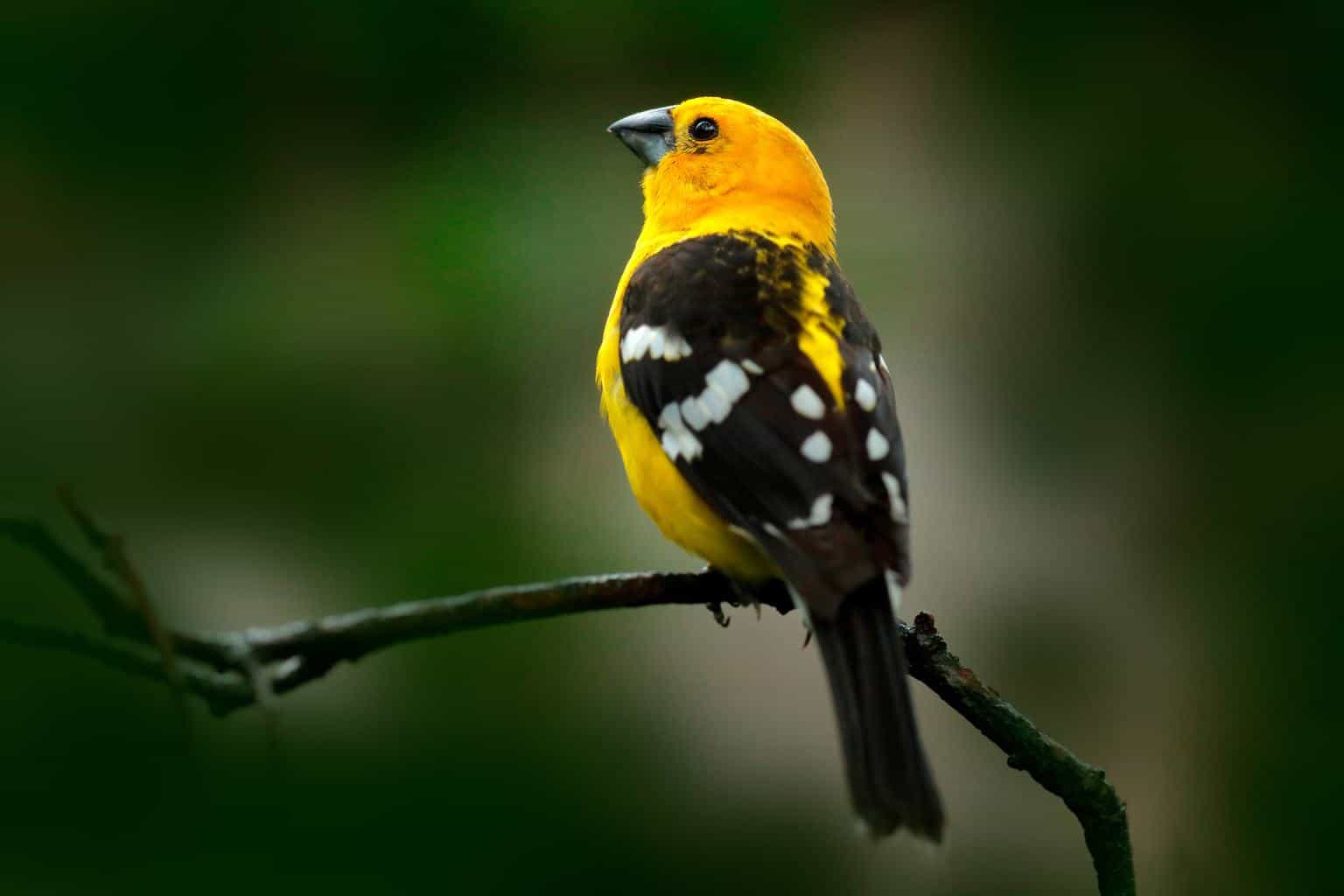
- Scientific name: Coccothraustes vespertinus
- Length: 6.3-7.1 inches
- Weight: 1.9-2.6 ounces
- Wingspan: 12-14 inches
The Yellow Grosbeak has a black head that fades into gray at the neck. The wings, too, are a mix of gray and black, with some white as well. It has a yellow unibrow, breaking up the black hue of the face, and a yellow chest.
It’s a frequent visitor to Arizona but its breeding range is in Canada and Western areas of the US and Mexico. It lives in forests or mountainous areas, building its nest on tree branches.
Yellow-Headed Blackbird

- Scientific name: Xanthocephalus xanthocephalus
- Length: 8.3-10.2 inches
- Weight: 1.6-3.5 ounces
- Wingspan: 16.5-17.3 inches
The Yellow-headed Blackbird is mostly sleek black, except for its yellow head and bib. Its eyes are even covered with a black domino mask.
It’s extremely rare in Western Europe, but it’s a common winter visitor of Arizona’s Lower Colorado River Valley. It’s a very territorial bird and has awful hoarse screeching songs.
Blue-Winged Warbler

- Scientific name: Vermivora cyanoptera
- Length: 4.3-4.7 inches
- Weight: 0.3 ounces
- Wingspan: 5.9 inches
With their rounded shape, yellow color, and small size, Blue-winged Warblers don’t look much different than a lemon. They have black hoods around their eyes and dazzling grayish-blue wings.
They’re always competing with the Golden-winged Warblers, intruding into each other’s ranges. For example, Arizona is considered the Golden-winged Warbler’s range. The Blue-winged ones are now expanding and displacing the golden Warblers.
Other Birds
Anna’s Hummingbird

- Scientific name: Calypte anna
- Length: 3.9 inches
- Weight: 0.1-0.2 ounces
- Wingspan: 4.7 inches
Anna’s Hummingbird has a fairly long bill and it looks like it’s made of small flat beads packed together. The face is bright pink on the sides and red in the center. The back, on the other hand, is dark green, and the sides are a lighter shade.
It’s a feisty, noisy bird common in North America, particularly in suburban gardens. You might try putting out a feeder with sugar water to tempt one. It lives year-round in Arizona, so don’t miss out on it!
Explore our comprehensive guide on the charming small birds of Arizona, ensuring you capture every flutter of these delightful winged residents.
Purple Gallinule

- Scientific name: Porphyrio martinicus
- Length: 13.0-14.6 inches
- Weight: 7.2-10.3 ounces
- Wingspan: 21.6-22.1 inches
A Purple Gallinule has an orange beak with a yellow tip and long yellow legs. Its neck is a dark purple that turns into turquoise as it reaches the back. The back itself is made of oily greens and brown.
The Gallinule has a light blue forehead. It acts like a chicken but lives in water and muddy marshes.
The Purple Gallinule is extremely rare in Arizona. It lives in dense freshwater wetlands in the Southeastern U.S and even farther south.
Ruff

- Scientific name: Philomachus pugnax
- Length: 8-12.5 inches
- Weight: 2.5-5 ounces
- Wingspan: 18-23 inches
The Ruff is a shorebird that sports a fancy Elizabethan era collar. The ruff around its face varies between black, white, and brown, sometimes with a hint of each color. The rest of its feathers are ginger, barred with dark brown.
It’s migratory and rarely comes to North America. Visits to Arizona are either accidental or casual. If spotted, it would be in tundra meadows.
Bohemian Waxwing

- Scientific name: Bombycilla garrulus
- Length: 6.3-7.5 inches
- Weight: 1.6-2.4 ounces
- Wingspan: 13 inches
The Bohemian Waxwing is plump with smooth pure gray feathers that darken near the wings. Its face has reddish-brown highlights, and there are a couple of flying feathers on the top of its head. The eyes and chin are streaked black. The wings are also black with yellow and white details, while the tail has a yellow tip.
They have a bohemian lifestyle and friendly attitude; perching and flying around in city parks, forests, and urban areas. Their range is Northern America and Eurasia.
Painted Bunting

- Scientific name: Passerina ciris
- Length: 4.7-5.1 inches
- Weight: 0.5-0.7 ounces
- Wingspan: 8.3 – 9.1 inches
As you can tell from its name, this bird looks like it flew out of a pastel painting. The Painted Bunting has a blue head, orange front, and a yellow patch on the back. The wings, too, are covered in green streaks, making for an incredibly colorful sight.
They live in low trees and shrubs, so plant some and put up a feeder and they might just come to your backyard. They’re easily scared off, so make sure to keep some distance.
They are rare but regular visitors to Arizona. Early fall is the perfect time for Painted Bunting sightings.
Montezuma Quail
- Scientific name: Cyrtonyx montezumae
- Length: 7.9-9.1 inches
- Weight: 4.3-8.1 ounces
- Wingspan: 16.1-16.9 inches
The Montezuma Quail is full-on black and white, with some light brown tints. The intricate details, however, make up for the lack of color. It has a white face with a black crescent on each cheek, a black line down the chin, and a black neckline. The rounded chest is polka-dotted while the back is heavily barred and streaked.
It’s considerably common in Arizona. You can find it in The Chiricahua Mountains, the Huachuca Mountains, or the Pajarito Wilderness.
Wrap Up
Now that we’ve been introduced to the most interesting bird species list in Arizona, it’s time to set up some backyard bird feeders! There’s nothing quite like studying colorful, intriguing birds from the comfort of your home.
You’re not an Arizona resident and you’re just visiting for a few days? Grab your field guide and head to one of the many great birdwatching places in the state, like the Chiricahua Mountains, to check some of the interesting birds highlighted in this article off of your bucket list. Good luck!

